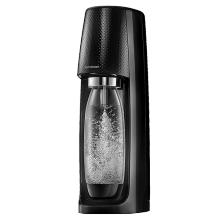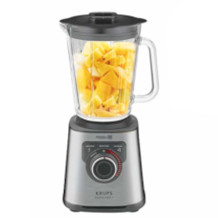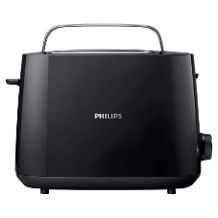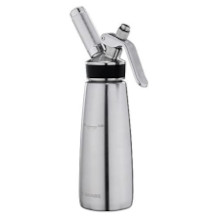Slow cooker purchasing advice: how to choose the right product
- What You Need to Know
- Slow cookers cook food particularly gently at very low temperatures and do not need to be monitored even if they are used for hours on end.
- Slow cookers are an easy way to prepare dishes and support a healthy diet by preserving nutrients well.
- They are suitable for anyone who wants to save time when cooking and are ideal for families because large quantities can be prepared easily in them.
- There are analogue and digital slow cookers, which are similar in the way they work and different in terms of operation and range of functions.
- In addition to the type of cooker, important buying criteria include size, material and special functions such as a timer.
Slow cooker – what is it?
With a slow-cooker, you cook various dishes particularly gently without turning on the cooker. The direct translation is “slow cooker”, but more precise and established is the term slow cooker: The kitchen appliance works with very low temperatures, so that the food is not cooked but simmered. The cooking effort is less, even if the actual process to the finished dish takes longer. But it is precisely this slow process that has clear advantages.
What are the advantages of a slow cooker?
Visually, the cooker is reminiscent of a conventional pot – and its operation is almost as simple. A big plus is the very independent cooking process. You fill the slow cooker, even with large portions if required, connect the appliance to a power socket and switch it on, there is usually not much more to do. You don’t have to monitor or influence the process and can do something else or rest in the meantime. Meanwhile, the Cooker prepares the food slowly, gently and evenly, preserving vitamins and other important nutrients as well as flavours. In addition, the food does not overcook and overcooking does not occur. Although a cooker does not cook all foods, many things are possible, from meat and fish to vegetables and soups. The power consumption is low, so cooking for hours is no problem.
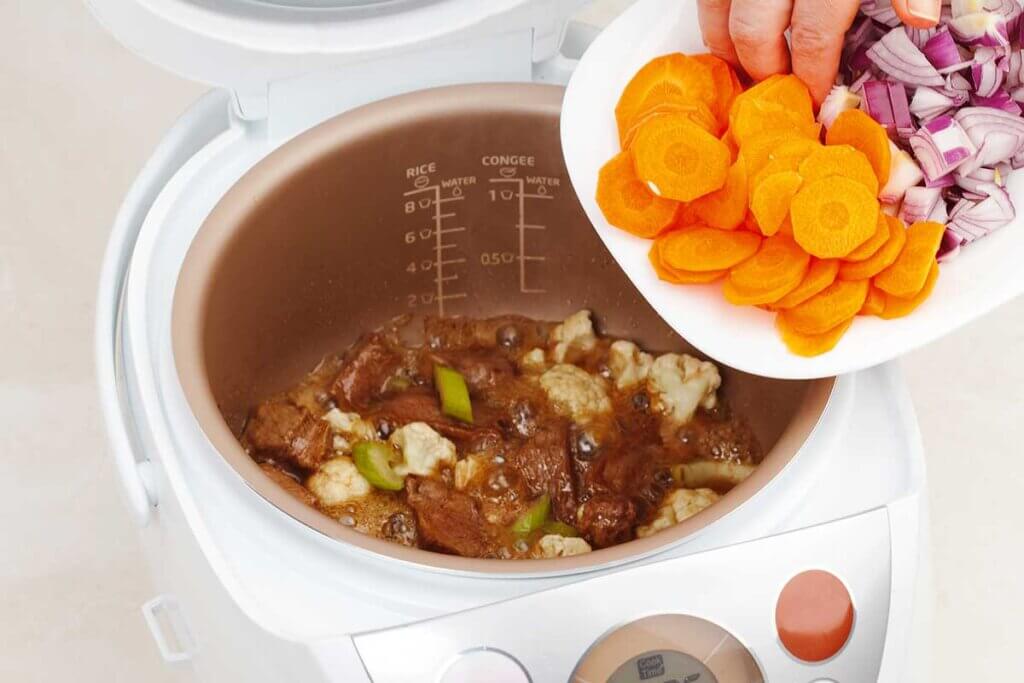
The advantages of slow cookers at a glance:
- Easy to operate
- Saves time when cooking
- Gentle preparation
- Even heating
- Good preservation of flavours and nutrients
- Versatile use
- Large portions possible
- Low power consumption
It is above all the time-saving and nutritional benefits that convince many users. It is by no means a product that focuses only on reducing effort. A slow cooker can optimise nutrient intake and at the same time serves as a kitchen aid because dishes are ready on demand – with a timer even to the point.
Who is a slow cooker suitable for?
Slow cookers are basically suitable for all people who want to manage their time sensibly, but do not want to forego a healthy diet. If you don’t always have the time and leisure to spend long hours in the kitchen creating healthy dishes, a slow cooker is a very good choice. Since many cookers are designed for preparing large quantities, it is primarily large families and other living communities that benefit from this practical kitchen appliance. But singles who want to save time when cooking are also well advised to use a cooker. If you already know in the morning that there is not enough time for extensive cooking in the evening and you are not a fan of fast food, an appliance that you turn on before you leave the house would be perfect for finding a freshly cooked, healthy meal in the evening. A slow cooker can fulfil exactly this purpose.
Not only for those who don’t like to cook
A slow cooker makes food preparation easier. Those who like to cook and consider the time in the kitchen, including chopping, stirring and seasoning, as relaxation, can still think about purchasing a slow-cooker. After all, there is not always enough time to pursue your passion at the cooker. In this case, a slow cooker is an ideal alternative.
How a slow cooker works
The long cooking time at low temperatures results in a convenient application that at first glance seems contradictory: you save valuable time, even though the appliance is in operation for a very long time. This allows users to turn on the cooker in the morning, for example, and let the food cook until the afternoon or evening. Slow cookers do not need an external heat source such as a hotplate, as they work with their own heating element. Most of the time, the food is heated from the bottom, but there are also models with a heat supply from the sides.
Safe is safe
Slow cookers are basically made so that they do not need to be supervised. However, since safety always comes first, the appliances should be stable during operation and the power cable should never run under or over the cooker.
This is how slow cookers are constructed
Slow cookers are simple constructions that look like an ordinary cooking pot. Normally, slow cookers consist of only three parts:
- Heating element
- Inner pot
- Lid
There are usually two side handles on the housing. The housing should also have several feet – ideally made of rubber or another non-slip material. The lid should close well to ensure the most energy-efficient use possible and also have a handle. Modern slow cookers are operated via a display and buttons on the outside. In other models, the settings are made using a classic control dial.
How are slow cookers used?
A slow cooker functions as an electric cooking pot. It is very easy to use: you place the cooker safely and stably – for example on the kitchen worktop – and connect it to the mains by cable. Fill the inner pot with the cooking ingredients. Before switching on the appliance, close it with the lid. Finally, set the desired temperature or level. Some models also have a timer function.
Simple serving
The inner pot is usually removable, so you can use it as a bowl immediately after cooking. Oven gloves are recommended when you remove it along with the food, as the pot can be very hot. Then pour the contents into a separate container or place the inner pot on the dining table.
What types of slow cookers are there?
The different slow-cooker models also remain manageable, as there are usually only two types: analogue and digital slow-cookers. The main mode of operation is identical in both versions. The main differences are in the operation and the range of functions.
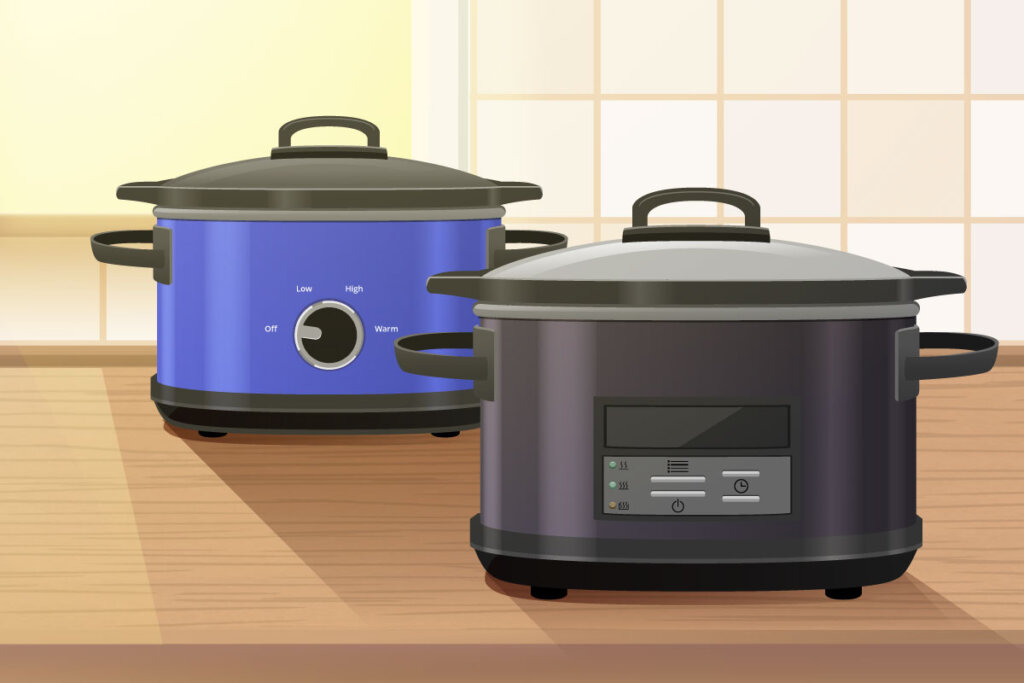
Analogue slow cooker
Analogue slow cookers are the classic version, operated by a simple control dial. There is no display on the appliance; analogue slow cookers also lack functions such as a timer. So you have to keep an eye on the time yourself and set an egg timer if necessary. In addition, such appliances usually score points with a lower price compared to digital cookers. The range of functions is usually smaller in analogue models.
Pro points
- Inexpensive
- Easy to operate
Drawbacks
- Fewer functions
- Without display
Digital slow cookers
Digital slow cookers are more modern and usually more expensive than analogue appliances. Here, operation is usually via a flat panel with buttons; the remaining time is shown on a display. The display is usually illuminated so that it can be read easily even in poor lighting conditions. In addition, such cookers often have an extended range of functions, including, for example, a timer and an automatic switch-off function.
Pro points
- Practical display
- More functions
- Simple button operation
Drawbacks
- Expensive
What to look for when buying a slow cooker?
Although the way slow cookers work is always the same, the different models can be distinguished in terms of their handling and technical aspects. These include the size, the material and weight, the type of operation and the cleaning options. The performance as well as special functions are also decisive for the purchase decision.
Well-known brands
Syntrox | Crocky | Vonshef
Handling
A small model is not suitable for large families, parties or club kitchens. However, if there is little storage space in your shared apartment and you mostly only use the slow cooker yourself, a small model may be worthwhile. The material of the inner pot plays a role if you want to combine the slow cooker with other appliances.
Size
The size determines the capacity of the inner pot. Accordingly, the decision for a size depends on how many people you normally cook for. The more people at the table, the larger the amount of food the appliance should be able to process in one go. However, a large model can also be useful in a single household if you often cook for stock. The capacity of a slow cooker is usually between one litre and seven litres.
If you want to be on the safe side, buy a large model. But energy consumption is higher when small quantities are cooked in an appliance with a large capacity. Although there is no binding relationship between capacity and number of people, as individual eating habits also play a role, it is possible to derive some guidelines:
| Capacity | Persons | Households |
|---|---|---|
| Up to 3.5 litres | 1 to 2 | Small |
| 4.5 to 5.5 litres | 3 to 4 | Medium |
| 6.5 litres and more | 5 and more | Large |
Housing material
The housing is usually made of stainless steel, so that slow cookers have a very high-quality appearance. For more individuality, you can choose between different colours from various manufacturers: be it a noble and modern look in silver, the classic white or rather an eye-catching red.
Lid material
The lid of slow cookers is usually made of glass, so that you can see the state of the cooking food without lifting the lid. It is important that the lid closes well to avoid any rattling noises and to minimise steam loss – this also usually increases the quality of the cooking food. The lid should also have a heat-insulated handle to prevent burns.
Inner pot material
The material of the inner pot is most important, as it comes into direct contact with the food. The better the material can withstand very high temperatures, the more versatile you can use it. Common materials include cast iron, ceramic and aluminium. Some inner pots are suitable for the cooker to brown meat and other foods before cooking. To bake ready-cooked dishes in the oven with cheese without transferring them first, you need a fire-resistant inner pot. The same applies if you want to crisp up meat after it has finished cooking in the oven or if you simply want to heat it up a little. Some pots are not completely ovenproof, but can be placed in the oven up to a certain temperature – for example, up to 100 degrees Celsius.
Ovenproof symbol
Occasionally, there is a marking on the bottom of pots that resembles the oven symbol for top and bottom heat: two lines on top of each other. The symbol indicates usability in the oven.
Weight
Weight usually goes hand in hand with the size of slow cookers: the bigger the appliance, the heavier it is. If you often transport the slow cooker or use it in different places, a light appliance is recommended. If you do not want to do without the corresponding capacity, you will have to put up with the heavy weight.
Dishwasher safe
Many slow cookers have individual parts that can be easily cleaned in the dishwasher. These include the lid and the inner pot. Since the heating elements are built into the housing, it should be cleaned particularly carefully and only by hand.
Pay attention to coatings
Even if some inner pots are made of a material that is basically dishwasher-safe, they should be cleaned by hand – for example, if the material is coated to provide even more protection against food burning.
Technical criteria
Ovens are usually in operation for several hours and yet are not considered “power guzzlers”. While almost all models boast a keep-warm function, many digital slow cookers have an integrated timer.
Performance
The power of a slow-cooker is given in watts and ranges from 150 to 350 watts – only in exceptional cases is the power higher. These values illustrate the extremely energy-saving operation of slow cookers. Even in the higher range of about 300 watts, cookers are much more energy-efficient, especially when compared to standard ovens.
LCD display
Many digital slow cookers have an LCD display. The display is not a must, but it is certainly practical for quickly and easily reading off data such as the temperature or the remaining time.
Temperature levels
There are hardly any differences here, because almost all slow cookers, whether analogue or digital, offer three levels: “Low”, “High” and “Warm”. In fact, to match the appliance name, the terms are usually shown in English, as slow cookers originated in the USA. These three levels refer to a low level, a high level and a keep-warm function. On the low setting, the slow cooker reaches a temperature of 70 to 80 degrees Celsius. The high setting brings the temperature up to almost 100 degrees Celsius.
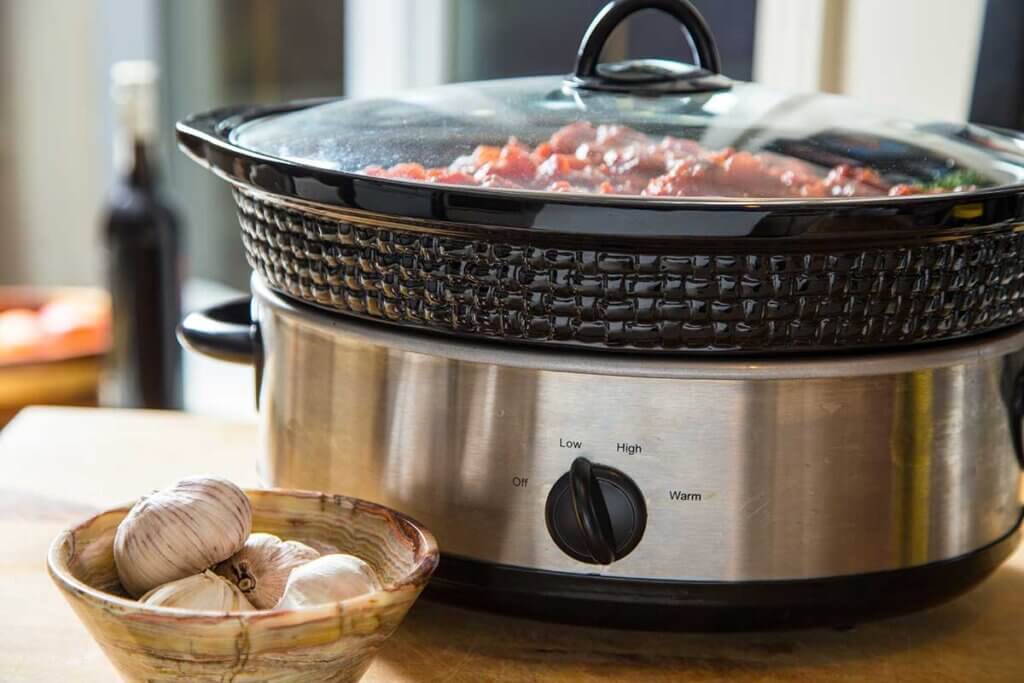
Keep-warm function
Many digital slow cookers have a practical keep-warm function: once the cooking time set in advance by the timer has elapsed, the appliance automatically switches to “warm” mode so that the food does not cool down. Most analogue models also have a keep-warm function, but this can only be activated manually on the control knob.
Timer
A timer is reserved for digital appliances and offers the option of setting an exact cooking time – on a very flexible scale from usually 30 minutes to 15 hours or longer. Ideally, you can also use the timer to set the start time. For example, you can prepare the slow cooker before leaving home and set the appliance to switch on automatically at a desired time and switch off again after exactly five hours.
Not all timers are the same
Some timers only determine the cooking time. If you want to use the cooker as flexibly as possible, you should make sure that the model has an appropriately extensive timer function that also allows a freely selectable start time.
Tips for overcooking food
Fortunately, there is not much you can do wrong when cooking food. However, food should not be mixed haphazardly; instead, it is advisable to have the finished dish already in mind. Ingredients often differ in their consistency and the way they are prepared. The following tips will turn overcooking into “Schöngaren”.
Apart from that, cooking times vary depending on the dish and the temperature setting. The following information is not binding, but serves only as a guide:
| Food | Weight | Cooking time on “High” | Cooking time on “Low” |
|---|---|---|---|
| Vegetables such as potatoes and carrots | – | 4.5 hours | 9.0 hours |
| Vegetables such as broccoli and pumpkin | – | 3.0 hours | 6.0 hours |
| Roast beef | 2.0 kilograms | 5.0 hours | 10.0 hours |
| Goulash – previously sautéed | 1.5 kilograms | 4.0 hours | 8.0 hours |
| Chicken breast | 1.0 kilograms | 3.5 hours | 6.5 hours |
Firm vegetables down
Potatoes, carrots and radishes are firmer than mushrooms or beans and therefore need more time to soften. For cooking in the slow cooker, this results in a certain arrangement in the inner pot: place potatoes and similarly hard foods at the bottom. As a rule of thumb, the firmer the vegetables are, the further down they should be placed when cooking in order to be as close as possible to the heat source. This applies primarily to appliances where the heat comes exclusively from below.
Helpful dicing
To optimise the cooking process, cut vegetables with a firm consistency into cubes beforehand.
Prepare meat properly
For some foods, proper preparation is advisable; this is especially true for meat. Whether you want to prepare it sliced or chopped, meat can be seared in the pan beforehand. The resulting roasted aromas add extra flavour to the dish. In addition, the meat loses a certain amount of fat when it is browned.
Speaking of which: fat should be trimmed off with a knife before the meat goes into the cooker. With poultry, you should also remove the skin – you can fry this in a pan or in the oven until crispy instead.
Lifehack(meat)
From meatloaf to bolognese: minced meat is one of the most popular types of meat. To reduce the fat content, fry it to small crumbs and then place it on kitchen paper for a while.
Cooking rice and beans
Several foods can be cooked at the same time in a slow cooker. However, the cooking times required do not always match. If the dish contains rice – long-grain rice is particularly suitable here – you should cook it to almost done beforehand. Add half a cup of water per cup of uncooked rice.
For beans, start the preparation the day before. You will get good results if you soak the beans overnight and boil them for about ten minutes before cooking – preferably in unsalted water.
Reduce liquids
Cooking uses less liquid than regular cooking. If you are working with recipes that are geared towards normal cooking with a conventional pot and cooker, you can halve the liquid specifications with a clear conscience – exceptions here are pasta and rice as well as soups and stews.
Creating soups and stews
Soups and stews can also be created with a slow cooker. Here, the liquid plays an important role, after all, the dishes should have an appropriate consistency. A rule of thumb is: cover the food in the inner pot completely with water and add more water after cooking if necessary.
Soups with milk
If the soup or other dish includes a dairy product such as coconut milk, reduce the amount of water to a maximum of two cups and add the milk only at the end – about an hour before the end of cooking. The same applies to cheese, sour cream and similar products.
Spices and herbs at the end
If spices and herbs are added too early, they will quickly boil over, so it is similar to adding milk: only add them shortly before the end. This applies to chopped spices and herbs – in one piece they can be added to the pot from the beginning.
Fig. 1: © yuryrumovsky / stock.adobe.com | Fig. 2: © FinalCheck | Fig. 3: © amyinlondon / stock.adobe.com

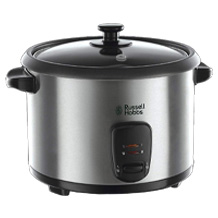
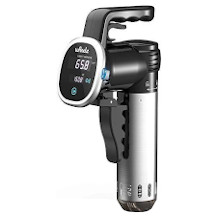
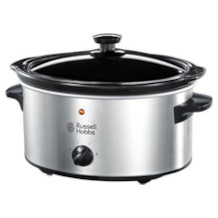

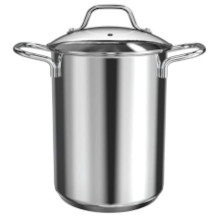
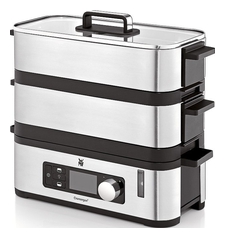
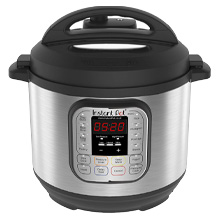
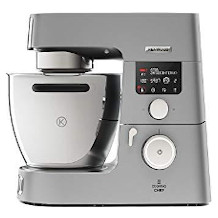
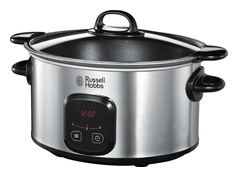
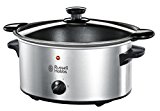
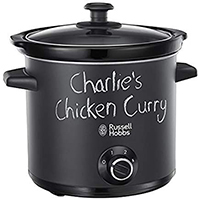
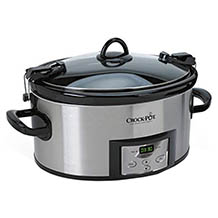
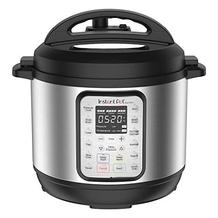
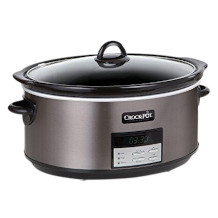
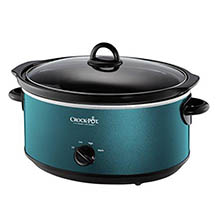
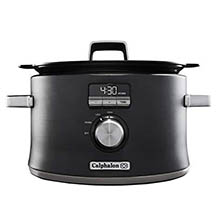
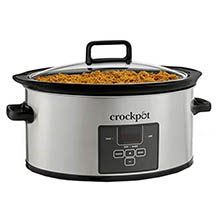
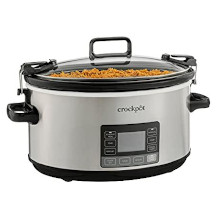

 2,032 reviews
2,032 reviews

